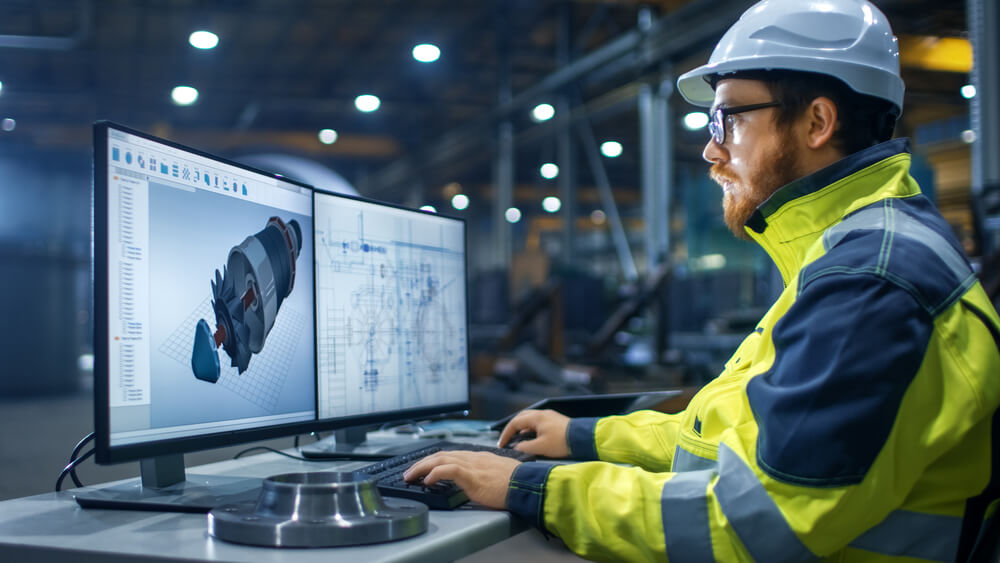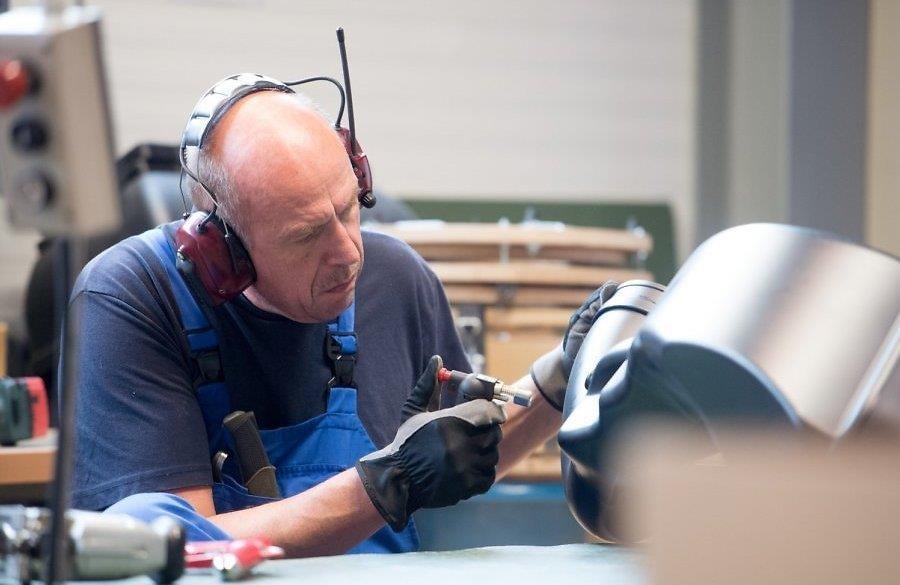Industrial Machinery SMEs Are Facing a Transformation
Industrial equipment and machinery manufacturers are the cornerstone of the manufacturing industry. Building the technology used to increase efficiency in other businesses, industrial machinery builders have always been at the forefront of industrial innovation. Today, these changes are especially profound.

The industry at the center of the transformation
The industrial machinery and equipment sector is one of the largest contributors to the manufacturing landscape in the world. For one, machinery manufacturers are the backbone of industrial nations such as the United States, China, Germany, and Japan, providing employment to millions of people (1.1 million in the US alone). But they also supply countless other industries (including themselves) with the technology to substantially increase efficiency, cut costs, and save energy. From farmers to manufacturers, from builders to miners, every sector leans on them.
Today, there are tens of thousands of companies in the United States that build industrial machinery. Apart from manufacturing behemoths such as General Electric, Parker Hannifin, and Caterpillar, much of the industrial machinery manufacturing sector is made up of SMEs. The problems and changes that small and medium-sized companies experience today might also seem small compared to the gigantic disruptions and innovations taking place within larger enterprises, but cumulatively their effect might be even bigger.
There is no way around it, we are in the midst of an all-encompassing digital transformation. And even though each and every industry is affected, industrial machinery manufacturers are at the center of the change.
But what exactly is changing and what can SME manufacturers do to keep up?
Shifting needs
According to a 2016 study by Aberdeen Group, the industrial machinery industry is shifting towards greater complexity, customized products, and quicker launches to respond to changing customer needs. This means that batch sizes are shrinking, often to a single unit, and manufacturers need to find new ways to produce as efficiently and cost-effectively as possible while also offering customization options and maintaining short lead times. This is by no means an easy task, especially in companies that are used to doing things the old way, with decades-old technology and knowledge.
New ways of engineering
With the move to Industry 4.0, both the nature of industrial machines and how engineers design them are changing. Customers are requesting ever more automation and connectivity, which feeds the explosive development of industrial robotics and IoT while also signifying increasingly complex bills of materials and production processes.
Although a decade ago, this would have meant much higher expenditures in the prototyping stage, today these new machines and processes can be modeled and simulated virtually. With the advent of open-source manufacturing, including publicly shared designs and additive manufacturing, costs related to designing, prototyping, and even manufacturing can be substantially reduced.
Even the way components are manufactured is slowly taking a turn from machining to additive manufacturing, with 3D printers becoming capable of printing high-quality, durable metal precision parts.
Servitization
Another trend that machinery manufacturers are seeing, is the shift from merely building products to also creating services that go along with them, resulting in what we call servitization. Servitization essentially means providing a complete solution, an “outcome as a service”. The burden of organizing parts delivery, providing repair and maintenance services, and even doing performance analysis is slowly but steadily being taken on by the machinery manufacturers themselves.
Performing these services along with selling the products does not, however, automatically mean you provide a solution. A solution is born when you insert yourself into the processes of your customer and gather their data to make decisions for them, resulting in improvements in their machine performance, business processes, and bottom line. Instead of inputs, OEMs can sell outcomes, increasing customer satisfaction and their own profit margin.
Digitalization
Modern industrial equipment companies are slowly but surely turning toward digital solutions to improve their workflows, be it modeling and simulation software, IIoT solutions that help gather production and machine performance data, or equipment that can be controlled remotely.
While these advanced solutions are still the playground of large enterprises and have only entered the periphery of SME manufacturers, there are also digital solutions that can be regarded as the first steps of digitalization: manufacturing ERP systems. What sets modern ERP/MRP software apart from the ones that have been on the market for decades is that they are inexpensive, user-friendly, and designed with SMEs in mind.
Sustainability
Another important global trend we see affecting the manufacturing industry is the drive toward better sustainability. Both governments and the public, and investors as a consequence, are pushing manufacturers to cut down on industrial emissions, minimize waste, and reduce the damage wrought on the environment.
This is where new technologies and materials play an increasingly important role, but a change in business practices is necessary as well. While renewable energy solutions are surging, machinery is becoming more efficient, and more sustainable materials are becoming economically viable, the supply chain disruptions of recent years have also created a need for reshoring, bringing manufacturing once again closer to the consumers.
The solution for SMEs
So, what’s a small to medium-sized industrial equipment manufacturer (or any other manufacturer for that matter) to do? The solution is quite straightforward: to embrace new technologies and start transforming your business sooner rather than later. Because every month you postpone adopting a technology that would make you more competitive is a month’s worth of head start for your rival companies.
This does not mean, however, that you should rush into implementing IIoT, advanced robotics, machine learning, and every other industrial innovation there is without carefully mapping out your needs. The first step in a manufacturer’s digital transformation should always be the implementation of an ERP/MRP system.
An ERP/MRP system acts as an infrastructure for information sharing across the business. It collects business data and analyzes it in order to improve production efficiency, organize inventory and minimize the associated costs, increase scheduling accuracy and visibility in the supply chain, and provide an accurate, real-time overview of other aspects of the business. This all lays the foundation for providing better customer service, minimizing waste, and making the business substantially more cost-effective. Additionally, the successful implementation of an ERP/MRP software could usher in the adoption of further innovations.
Key takeaways
- The industrial machinery and equipment sector is one of the largest contributors to the manufacturing landscape in the world, providing employment to millions of people and creating technology that helps other industries become more efficient.
- Even though today, each and every industry is affected by rapid changes taking place thanks to digital transformation and supply chain disruptions, industrial machinery manufacturers are at the center of the change.
- For one, the industrial machinery industry is shifting towards greater complexity, customized products, and quicker launches, meaning that manufacturers must find new, more efficient, and quicker ways to prototype and manufacture their products.
- Innovations in engineering, such as virtual modeling and simulations, as well as 3D printing, are making prototyping and launching products easier and more cost-effective.
- Another trend that machinery manufacturers are seeing is servitization. Servitization essentially means providing a complete solution, an “outcome as a service”, e.g. providing repair and maintenance services, and even doing performance analysis after the piece of equipment has been sold.
- Manufacturers are also pushed to cut down on industrial emissions, minimize waste, and reduce the damage wrought on the environment by utilizing more efficient machinery, renewable energy, and more sustainable materials while also reshoring production.
- The solution to keeping up with the changes is to embrace them and take the necessary steps not to lag behind the competition. The first step should be to implement an ERP/MRP system.
You may also like: Advantages and Disadvantages of Using an MRP System




